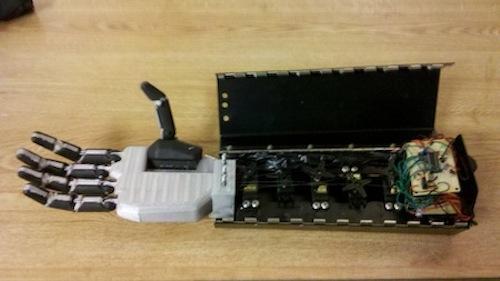The Ins & Outs of Conveyor Innovation
August 26, 2014

There's no doubt that technology and automation have made great strides in conveyor design. Historically, conveyors were typically viewed as an afterthought in the design process. Used simply to move parts from point A to point B, conveyors often were the last piece of equipment to be included in a packaging line.
That's certainly not the case anymore. Today, the flexibility of conveyors allow engineers to be more creative in their use, which leads to packaging and material-handling systems that are more robust and comprehensive than ever before. Conveyors have become integral components of an application, an extension of a plant's processing and packaging line.
Recent trends in conveyor design and accessories are leading to increased throughput and productivity in equipment. While the most common type of conveyors are straight-line, many other designs are now becoming commonplace in plants.
Conveyor innovation
Backlit conveyors use light fixtures installed at certain sections in the frame to illuminate items traveling on a translucent belt. These conveyors incorporate in-line vision sensors for visual-system interface and inspection. The contrast created by the light between passing product and the belt allows for inspection. Parts can stop directly over the lighted section or pass by uninterrupted, depending on the application.

Some applications require inspecting products for metal-free design. In these conveyors, which also contain a metal-free belt, part of the steel bedplate is removed and replaced with a Delrin (an inflexible polymer that resists heat) bedplate over the inspection area. As a result, the metal-scanning device checks passing products without receiving false readings from the bedplate.
Single-drive multiple belts move two or more lanes of product. They use a common drive or shaft coupled to a single gearmount to move two or more conveyor belts. Multi-belt conveyors can mount two or more individual belts onto a single frame. Advantages of multi-belt conveyors include minimizing motor quantity, reducing space requirements by remotely mounting drives, and achieving the same belt speed with multiple side-by-side conveyors.
Using permanent ceramic magnets placed in the bed, magnetic conveyors hold ferromagnetic parts to the belt during processing (including upside down applications) and accommodate changing elevations. Magnets are one inch wide and normally spaced at half the product's width. Strength and size of the magnetic field are application specific. In general, two rows of magnets are installed: one orientated as north and one as south. However, multiple rows can be used for larger products or additional strength.
Vacuum conveyors are made by perforating the belt and drawing air, using a regenerative vacuum blower, through groves in the bed of a standard conveyor. The vacuum blower's size is determined by the total area of vacuum holes open during product running, as well as the pressure to hold the product and its seal to the conveyor belt. Belt types are usually high friction or electrically conductive, and can reach speeds of 264 feet per minute. Vacuum conveyors hold parts securely to the belt for inspection and assembly/feeding applications, move items on an incline, and maintain control of flimsy parts or moving material.
About the Author(s)
You May Also Like





